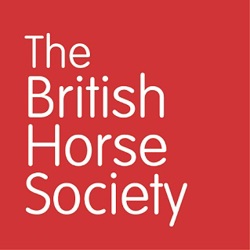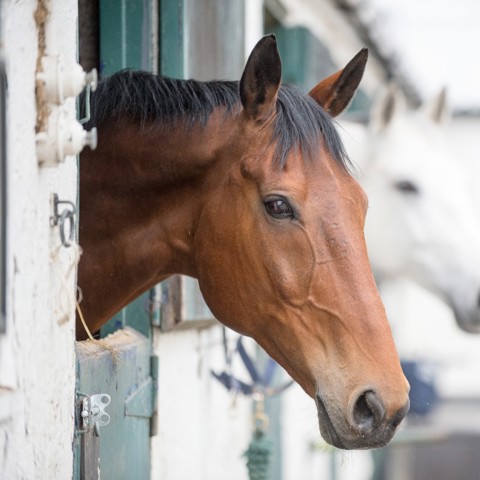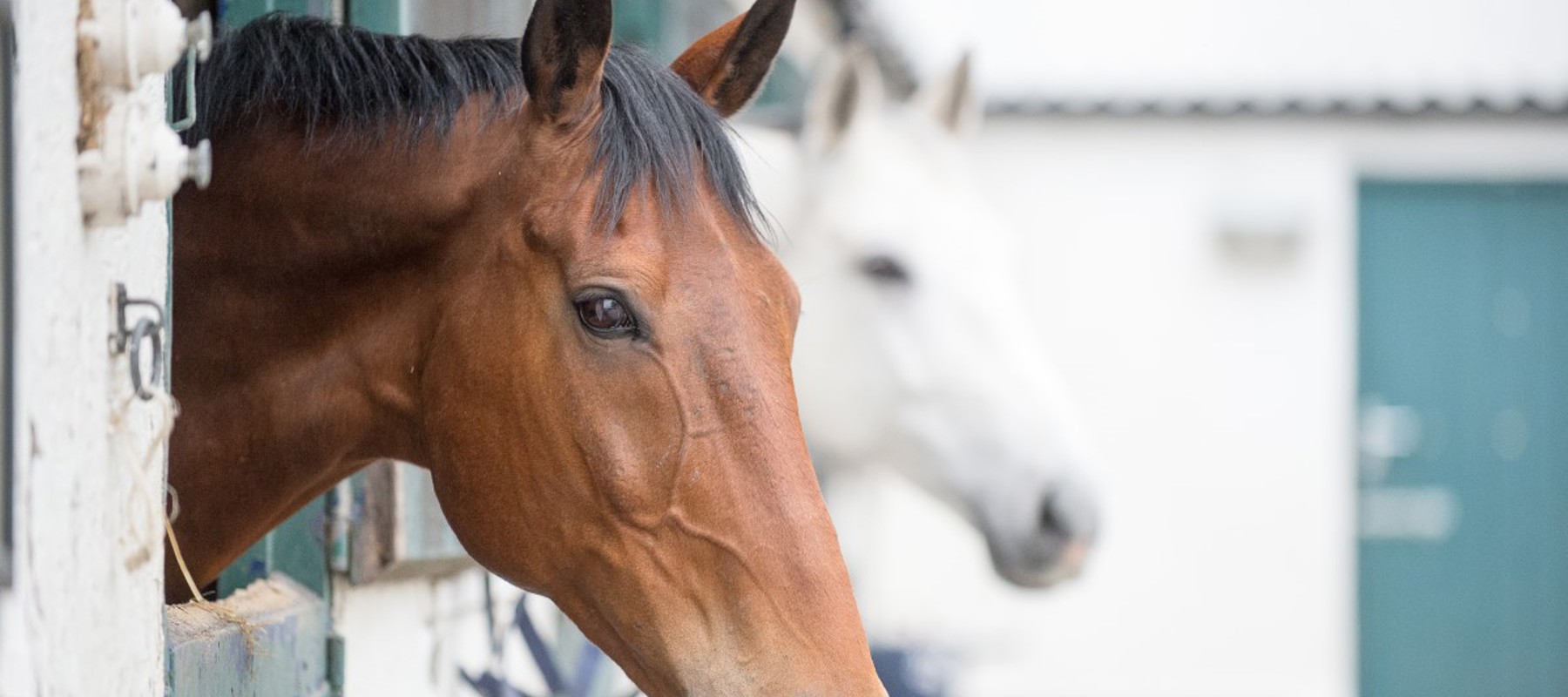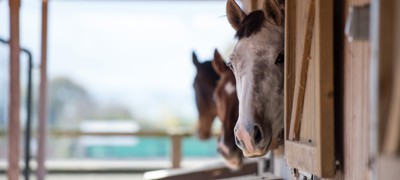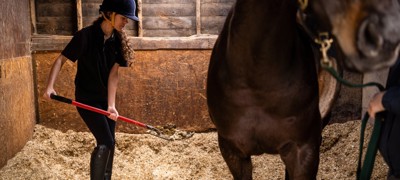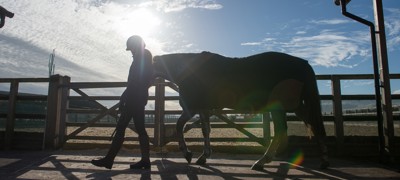Horses spend varying amounts of time in their stables, depending on their management, routine, health and the time of year. It is important to make sure the comfort and welfare of your horse is not compromised when they are in their stable, as poorly designed structures can increase the chance of injury, health problems and pose a fire risk.
The guidance below will help you make informed choices to keep your horse as healthy and safe as possible in their stable.
Stable size
As a minimum, stables must be big enough to allow your horse to turn around and lie down and get up comfortably. All passageways should provide sufficient room to enable horses to be led safely past others.
All horses are individual, and therefore may need a larger stable size above the minimum recommendations which are:
- Large horses (17hh+): 3.65m x 4.25m (12ft x 14ft)
- Horses: 3.65m x 3.65m (12ft x 12ft)
- Large ponies (13.2hh+): 3.05m x 3.65m (10ft x 12ft)
- Ponies: 3.05m x 3.05m (10ft x 10ft)
- Foaling box (horse): 4.25m x 4.25m (14ft x 14ft)
- Recommendations for donkeys are available from The Donkey Sanctuary Stable Measurement Guide.
The Codes of Practice recommends that roofs should be high enough to provide adequate ventilation including good air circulation. There should be a minimum clear space to the eaves of 60-90cm (2-3ft) above the ears of the horse in its normal standing position.
Design
There are many different stabling designs available such as American barns, wooden or breeze block stables and barn systems. Each design allows for different levels of social interaction, something horses have an inherent need to do. Consider whether your horse can socially interact with another horse when stabled. Could you potentially modify your individual stabling to allow your horses to safely interact, or see one another as a minimum?
Flooring
Stable flooring should be as even as possible, non-slip and designed to drain urine away from the horse, such as slopping towards the back or having drainage channels.
There are many bedding materials available on the market to suit the needs of the horse and owner. Bedding or matting should cover the whole stable floor, particularly near the door, to help avoid strain on limbs and joints from standing on hard flooring, such as bare concrete, for long periods of time.
Ventilation
Effective ventilation in your stable is essential all year round, to encourage fresh air to circulate, for temperature control and to help decrease the risk of respiratory problems such as equine asthma (previously known as recurrent airway obstruction (RAO).
Ventilation can be achieved through stable doors, adequate roof height, air vents and windows.
Windows, for example positioned at the back of the stable, help to provide natural light and ventilation. Never use glass in stable windows as it will become extremely dangerous if it shatters. You can use perspex or safety glass for your window, but a metal grill fitted between the horse and the glass is advised for safety. Alternatively, windows can be opened and closed by a smaller hatch, which allows the opportunity for the horse to fully look out.
Stable doors
Stable doors should open outwards or slide across and must be able to fasten securely shut. Depending on the design, a stable door can be fastened securely with both a top and bottom bolt (known as a kick bolt). These fittings are needed to help ensure the horse doesn’t escape or get a leg stuck between the door and the frame. Stable doors should be a minimum of 1.25m (4ft) wide. The height of the door and roof should allow the horse or pony to look out with their head comfortably over the door to be able to express natural behaviours maintained by visual stimulation.
Lighting
It is essential for there to be adequate lighting in your stable area to allow you to see and care for your horse safely, especially in the dark winter months. All light fittings and wiring must be installed with safety in mind. Light fittings/switches should be encased in a plastic safety cover and fitted where horses cannot reach them. Make sure wires are not exposed to avoid them being chewed on!
Fixtures and fittings
Fixtures and fittings such as tie rings and salt holders should be kept to a minimum, free of sharp edges and positioned in a way to help avoid injury, particularly to the horse’s face and eyes.
Putting a horse safe mirror on the stable wall may help to reduce stress. It is important to supervise your horse when you first install a stable mirror as they may feel threatened seeing ‘another horse’ present in their stable. Always use horse safe products as a glass mirror has the potential to cause an injury
Water supply
A constant supply of clean, fresh water is essential to help prevent dehydration and colic.
Depending on your set up, you can use buckets or automatic drinking bowls to provide water in your stable. Both watering methods have pros and cons.
Water buckets
chevron-down
chevron-up
A cheap option. You can measure how much your horse has been drinking but it does require you to lift and carry the buckets to and from the stable. If possible, position your horse’s water bucket in the corner of the stable to help prevent them being knocked over. Be aware that buckets of water in the stable can become warm and possibly unpalatable if left to stand for too long in hot weather, so you may need to change them more regularly than usual to keep them fresh. In cold weather, adding some warm water into their buckets can prevent the water from freezing and may encourage a horse to drink if they don’t like the colder water!
Automatic drinking bowls
chevron-down
chevron-up
Automatic drinking bowls can be expensive and need to be installed. You can’t tell how much your horse has been drinking but they do reduce the amount of physical yard work and ensure your horse is provided with unlimited fresh, clean water. Be aware pipes can freeze during cold weather so you may need to also use buckets during this time. Some horses may struggle with the concept of the drinker so make sure you provide a water bucket as well while your horse is getting use to the idea.
Haynets
It is ideal to provide your horse with unlimited forage at ground level, but this system may not be appropriate for all horses if they need their intake restricted, for example, to encourage weight loss. If you are using haynets make sure to fix them at the horse’s head height so they do not hang low once they are empty as this could potentially increase the risk of a hoof becoming caught.
